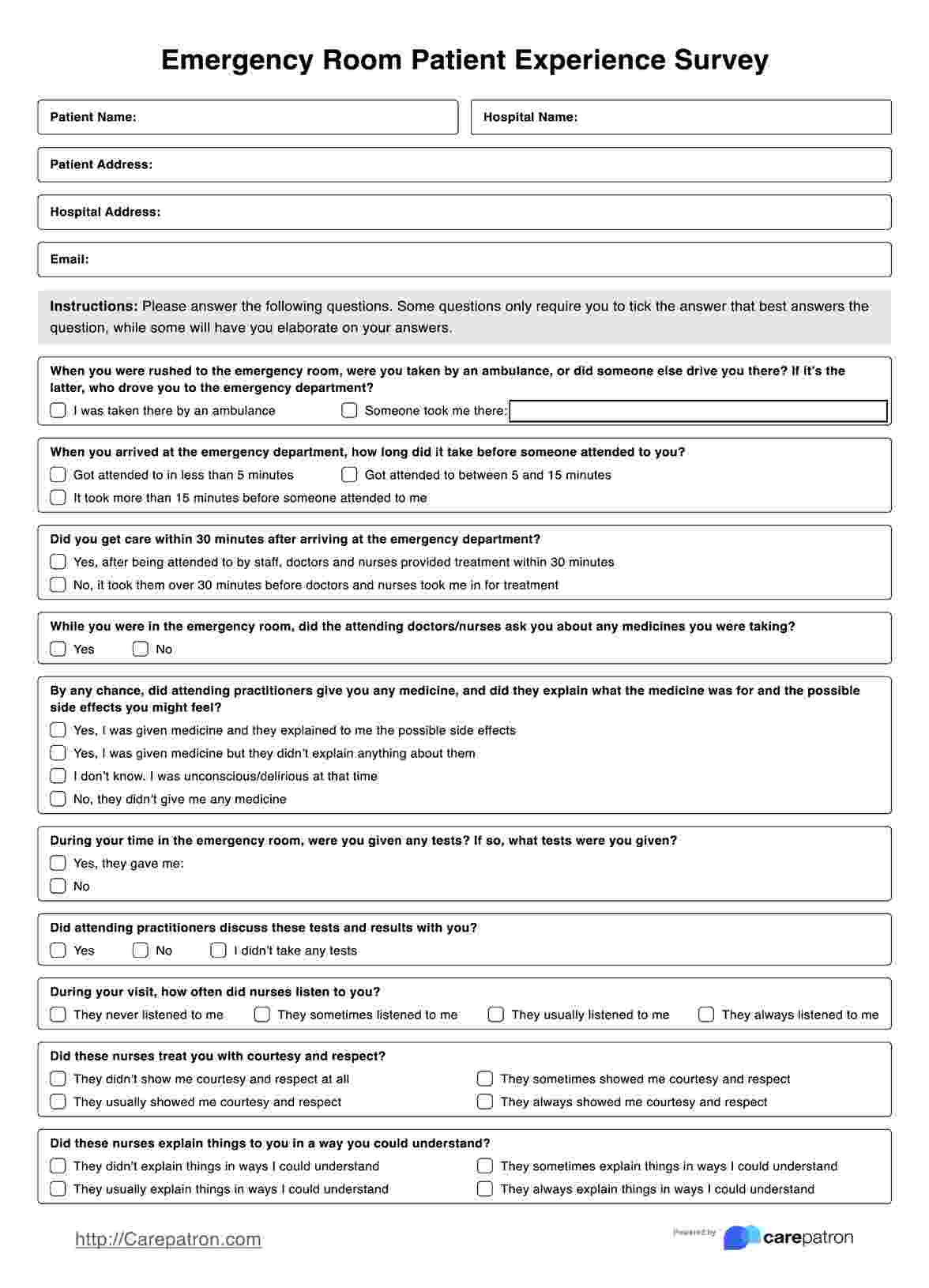The questions that you should ask must benefit your department in terms of how doctors/nurses can improve when it comes to interacting with patients, how quickly the department is able to assign someone to attend to patients, etc. You want to write questions that will lead to points for improvement. If you’re having trouble with that, you can use our template for free! Or use it as inspiration to give you an idea as to what questions you should ask!

Patient Experience Survey (Emergency Room)
Issue this Emergency Room Patient Experience Survey to a patient who had an operation or procedure inside the emergency room of your hospital/clinic. The survey will inform what your hospital/clinic needs to maintain or improve regarding your emergency room(s).
Patient Experience Survey (Emergency Room) Template
Commonly asked questions
That depends. If the patient is not groggy after the treatment, then you may issue this to them. But if they cannot pay attention or even hold anything because they are weak or on medication, you might want to hand it to their companion. If it’s more convenient for both parties, just email it and have them send it back after a while.
You can send a follow-up to nudge them. Try adding “We would like to hear from you so we know what aspects of our services are doing well and what aspects are not” to your follow-up message.
But if they really don’t send one back to you, well, that’s okay. So long as you don’t forget to issue these surveys to patients/their companions, you’ll be fine. Someone is bound to send back fully-accomplished forms.
EHR and practice management software
Get started for free
*No credit card required
Free
$0/usd
Unlimited clients
Telehealth
1GB of storage
Client portal text
Automated billing and online payments











